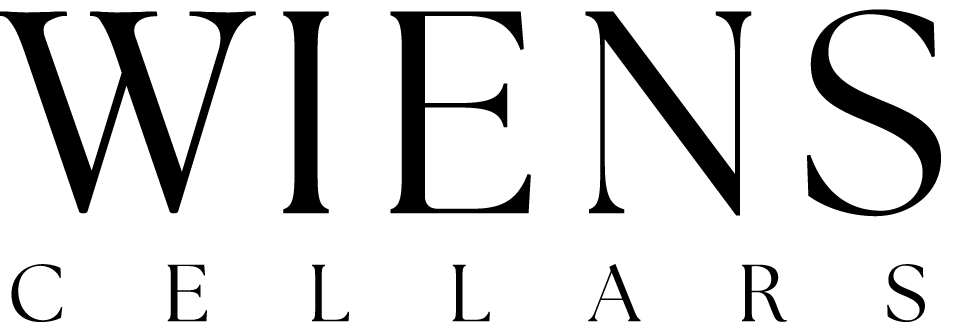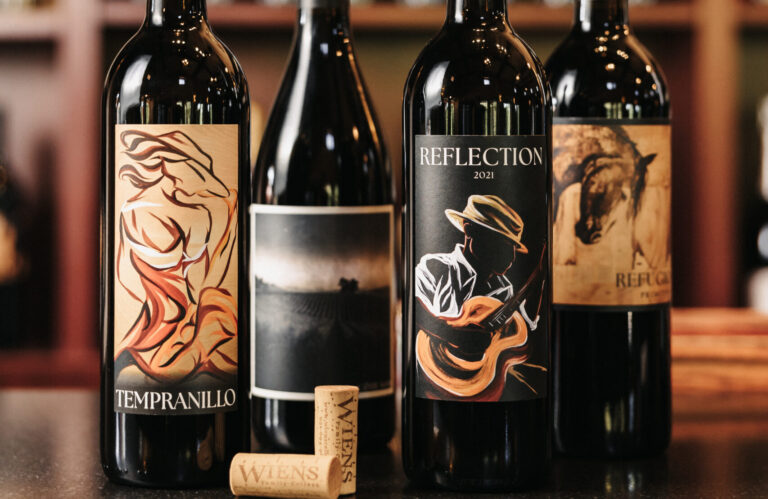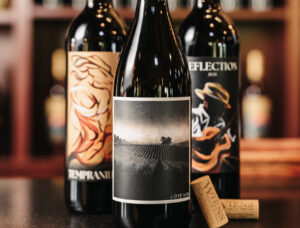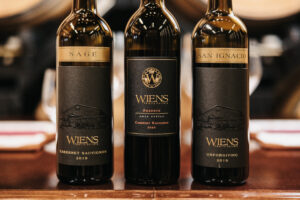Wine, with its rich tapestry of flavors and aromas, has a unique way of weaving stories that evoke emotions and tantalize the senses. Yet, long before you savor that first sip, the wine label is often the initial point of contact between you and the bottle. Wine labels play a significant role in the wine-buying process, serving as a gateway to the world within the bottle. They offer insights into the wine’s origin, character, and the dedication of those who crafted it. In this exploration, we aim to decode the language of wine labels, empowering you with the knowledge to make informed choices and discover new favorites.
History and Evolution of Wine Labels
The Origin of Wine Labels
The history of wine labels traces back to ancient civilizations. These early labels, however, differed greatly from what we see today. Rather than being the small works of art they are now, labels were practical, often simple tags that helped identify the contents of amphorae, jars, or barrels. Such tags allowed merchants and consumers to distinguish one wine from another.
But it wasn’t until the Middle Ages, when the use of glass bottles became more common, that labels as we know them began to take shape. These labels, typically made of parchment or paper, included rudimentary information such as the winery’s name, but were far from the detailed labels we see today.
How Wine Labels Have Evolved Over Time
As the wine industry grew, so did the sophistication of wine labels. In the 18th century, wine producers started to brand their products, attaching decorative labels to their bottles, marking the birth of the modern wine label. These labels not only served a practical purpose but became symbols of quality and authenticity.
As the centuries rolled on, labels evolved further, incorporating more information about the wine, including the grape variety, vintage year, and the region where the grapes were grown. Wine regulations and design trends continued to shape labels, and the 20th century saw an explosion of creativity in label design.
The evolution of wine labels is a testament to the changing preferences and needs of consumers, making them an exciting reflection of their times.
Basic Components of a Wine Label
To understand wine labels, let’s start by dissecting the basic components:
- Winery or Producer Name: The winery’s name is the most fundamental element on a label. It identifies the producer and, for many, carries a reputation for quality. For example, seeing “Wiens Cellars” on a label signifies the promise of craftsmanship, which the winery has upheld for generations.
- Vintage Year: The vintage year indicates when the grapes were harvested and the wine was made. It’s a critical piece of information as it can significantly impact the taste and character of the wine.
- Wine Region or Appellation: The wine’s origin is of paramount importance. The region or appellation indicates the geographical area where the grapes were grown, affecting the wine’s characteristics. Appellations are often associated with specific wine quality standards, which can help you understand the wine’s pedigree.
- Grape Variety or Blend: Knowing the grape variety or blend gives insight into the wine’s character. Different grapes offer distinct flavors and aromas, so understanding this aspect can help you choose wines that align with your preferences.
- Alcohol Content: The alcohol content is usually expressed as a percentage. It affects the wine’s body and mouthfeel, helping you anticipate the wine’s richness and intensity.
Decoding Label Terminology
Wine labels can be laden with terminology that conveys important details about the wine. These terms can be indicative of wine quality, production methods, or offer descriptive insights.
Terms Indicating Wine Quality
- Reserve: The term “Reserve” on a label suggests that the wine is of higher quality and often implies that it has been aged longer than non-reserve wines. It’s a signal that the wine has met certain standards of excellence.
- Grand Cru: Commonly associated with wines from Burgundy, the “Grand Cru” designation signifies the highest quality vineyards within the region. Wines bearing this title are often exceptional and sought after.
Terms Related to Wine Production Methods
- Organic Wine: “Organic” indicates that the grapes used to make the wine were grown without synthetic pesticides, herbicides, or fertilizers. Organic wines are made with minimal chemical intervention.
- Biodynamic Wine: Biodynamic winemaking goes beyond organic practices, emphasizing the vineyard’s harmony with nature. It often includes phases of the moon and astrological influences in the winemaking process.
- Descriptive Terms: Descriptive terms like “Barrel-aged” or “Unfiltered” provide insights into the winemaking process and can help you anticipate the wine’s character. For example, “Barrel-aged” wines are often richer and more complex, while “Unfiltered” wines may retain more of their natural flavors.
Labels and Wine Regulations
Wine regulations and labeling laws vary by country. In some regions, there are strict rules governing label information. These rules ensure that wine labels provide accurate and consistent information to consumers.
Understanding these regulations can be a valuable skill for interpreting labels. For example, in France, the “Appellation d’Origine Contrôlée” (AOC) system sets stringent standards for wines produced in specific regions. In the United States, the Alcohol and Tobacco Tax and Trade Bureau (TTB) regulates wine labels, ensuring that the information provided is accurate and not misleading.
Appellations, as mentioned earlier, play a significant role in wine regulation. Knowing the rules that govern various appellations can help you make informed decisions when selecting wines.
Modern Trends in Wine Label Design
The Rise of Artistic and Unconventional Labels
In recent years, there’s been a resurgence in creative label design. Wineries and artists have been collaborating to create labels that are more than just informational; they’re works of art. Intricate illustrations, unconventional materials, and unique shapes have added a new layer to wine label aesthetics. These artistic designs not only catch the eye but also evoke the essence of the wine within.
How Label Design Impacts Consumer Perception
The label isn’t merely a means of providing information; it’s an integral part of the wine’s identity. A well-designed label can evoke certain emotions and give consumers a glimpse of the wine’s character before the bottle is even opened. Whether it’s a classic, elegant label for a traditional wine or a vibrant, modern design for a contemporary blend, the label sets the stage for the tasting experience.
A beautifully designed label can make a bottle stand out on the shelf and pique your interest. It’s often the first step in building a connection between the consumer and the wine.
Wiens Cellars’ Wine Labels
At Wiens Cellars, we understand the importance of our labels in representing our wines. For us, each label is a canvas that tells the story of our winemaking philosophy and values. We aim to create labels that reflect the dedication and craftsmanship that goes into every bottle we produce.
As David Steinhafel, owner of Wiens Cellars, eloquently puts it, “Our wine labels are a reflection of our commitment to quality and our respect for the rich traditions of winemaking.”
To bring you closer to the heart of Wiens Cellars, let’s delve into the labels on our bottles and explore what they reveal about the wines they adorn.
An Overview of the Design and Information on Wiens Cellars Labels
At Wiens Cellars, our labels serve as more than just identifiers of wine bottles; they are gateways to our world of winemaking. Each label has been meticulously designed to convey essential information about the wine, our winemaking philosophy, and the story behind the bottle.
Label Information:
- Winery or Producer Name: Our name, Wiens Cellars, stands proudly at the top of the label. It represents not just a place of winemaking but a heritage of excellence and commitment to craft.
- Vintage Year: The vintage year, prominently displayed, reflects the unique characteristics of the grapes harvested in that specific year. It’s a testament to our unwavering dedication to producing wines that authentically express their origin.
- Wine Region or Appellation: The label typically mentions the specific wine region or appellation from which the grapes are sourced. This not only underscores our commitment to terroir-driven winemaking but also provides an insight into the wine’s potential flavor profile.
- Grape Variety or Blend: Wiens Cellars produces a wide range of wines, each with its grape variety or blend. This essential piece of information guides wine enthusiasts to choose wines that align with their preferences.
- Alcohol Content: An indication of alcohol content provides an idea of the wine’s body and weight. It helps in selecting wines that match the occasion and food pairings.
How Wiens Cellars Labels Reflect the Winery’s Philosophy and Values
Our wine labels are more than just attractive designs; they are the visual manifestation of our winery’s core philosophy and values. Brian Marquez, our winemaker, points out that “a label should reflect the heart and soul of the wine it represents.”
- Terroir Emphasis: Wiens Cellars’ labels are a homage to the terroir of the Temecula Valley. Specifically, with our Vineyard Designate labels, we highlight premier vineyards that masterfully showcase our terroir in our highest quality wines. By prominently featuring the wine region or appellation, our labels highlight the significance of the unique climate and soil characteristics that influence the grapes’ flavor and aroma.
- Heritage and Legacy: Our labels celebrate the heritage of both the Wiens & the Steinhafel family, who have been integral to the Temecula wine scene. The design often incorporates elements that pay tribute to this legacy and the rich history of winemaking in the valley.
- Craftsmanship and Dedication: We believe that winemaking is an art form, and our labels mirror this belief. The careful selection of labels that best represent each wine is a demonstration of the craftsmanship and dedication behind every bottle.
- Expression of Wine Styles: The design of our labels also reflects the characteristics of the wines they adorn. A label on a robust Cabernet Sauvignon might evoke power and depth, while a Chardonnay label suggests grace and balance. These visual cues offer a sneak peek into the wine’s style and character.
- Local Artistry: In certain instances, specifically with our Artist Series labels, we collaborate with local artists to create labels that not only express the essence of the wine, but also showcase the talents of our community. This underscores our commitment to being an integral part of the Temecula Valley & an advocate for creators & dreamers everywhere.
Our labels, in essence, are the first chapter in the story of each wine. They are designed to set the stage for the tasting experience, offering a visual narrative that complements the journey you’re about to embark on.
These labels are much more than printed graphics; they are the embodiment of our winery’s core values, and they invite you to discover the world within the bottle.




